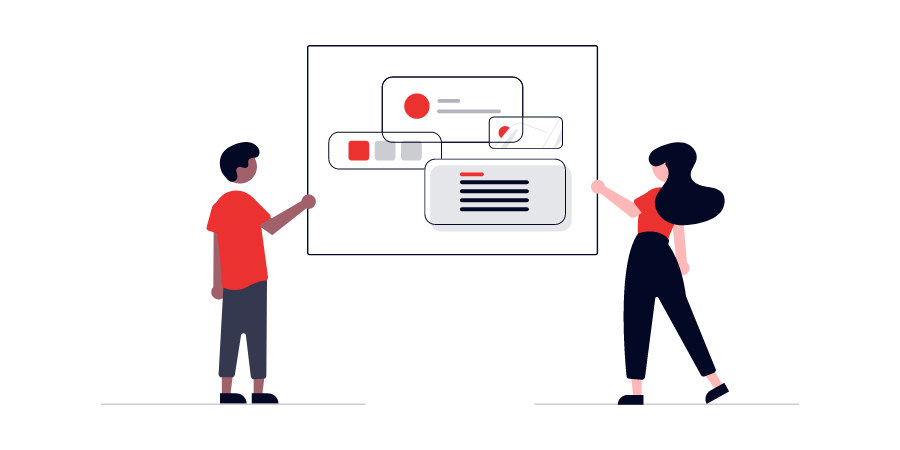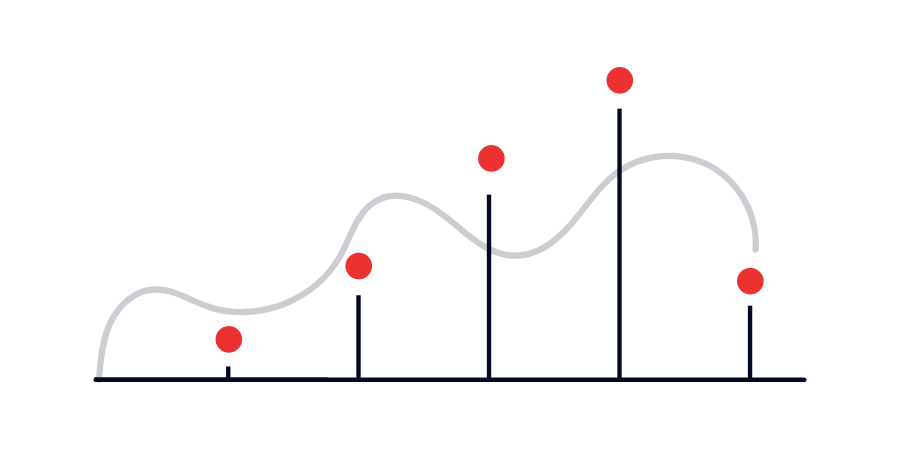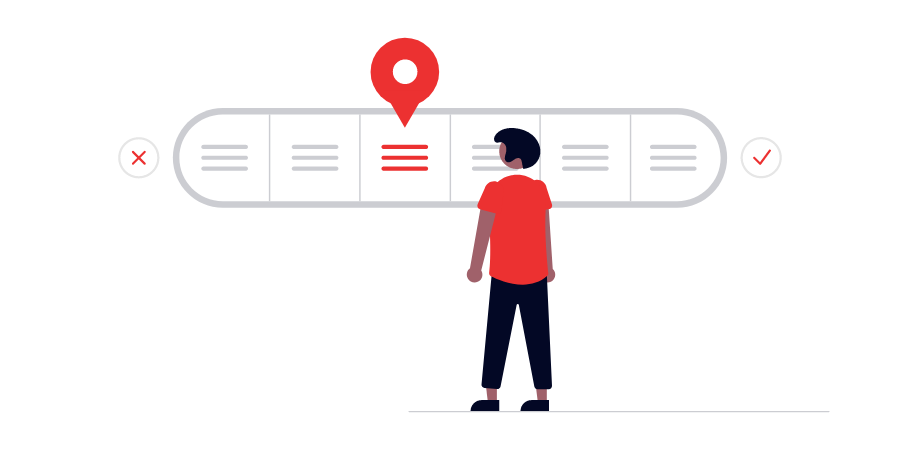![]()
Brought to you by CustomerIQ, the AI platform to automate CRM data entry, surface opportunities, and provide actionable insights to your whole organization. Learn more here.
Superhuman, the email service known for its speed and efficiency, has always been at the cutting edge of innovation. Founded by Rahul Vohra in 2014, Superhuman has helped users tackle their inboxes with unprecedented speed, cutting down hours of email management each week. But as artificial intelligence emerged as a game changer in the tech landscape, Superhuman had to evolve, and fast.
It wasn’t just about keeping up with the competition—it was about maintaining their core promise: delivering the fastest email experience possible. That’s when Raul and his team made a bold decision to pivot their focus toward AI, partnering with OpenAI and fundamentally transforming their approach to email.
We had the opportunity to sit down with Rahul to hear the inside story behind Superhuman’s foray into AI and how it has redefined the company’s mission. Here’s what we learned:
- Why AI became inevitable for Superhuman
- The decision-making process behind their AI strategy
- How Superhuman implemented AI features that lead the market
- Superhuman’s “Theta Mode”
- Key learnings from their experience with AI
Please enjoy our conversation with Rahul Vohra, Founder and CEO of Superhuman.
Tell us a bit about how the idea of AI first came into the picture
I actually remember it vividly. I was on This Week in Startups with Jason Calacanis back in October of 2018. Jason asked me, “What does the future of email look like?” After thinking about it, I told him I saw email becoming incredibly collaborative. In the not-so-distant future, I imagined people sharing conversations, commenting, assigning tasks, and working together inside their email clients. And even back then, I knew AI would be a big part of that. I told him, “AI will summarize your emails, draft replies, schedule meetings, and maybe even send fully written emails on your behalf.” That was six years ago, and we always knew we were heading toward that day.
When did you know it was time to take AI seriously for Superhuman?

There was a pivotal moment in late 2022. It’s hard to overstate how important the launch of ChatGPT was. Everyone was talking about it, and by February 2023, it became clear that large language models (LLMs) like ChatGPT would change everything about how we work. The speed at which ChatGPT grew was staggering—it reached 100 million monthly active users in just two months, which was faster than any app in history. Suddenly, people were seeing that AI could write articles, edit text, research topics, summarize long documents, translate languages—you name it.
We started asking ourselves, “What if LLMs could help with email?” If they could summarize emails, write replies, or even handle the bulk of someone’s inbox, we knew we could save our customers a ton of time. And it wasn’t just us thinking about it—our customers were asking for these features too. In fact, AI features quickly became our top user request, far outpacing anything else people were asking for.
How did the team react to this new opportunity? What kind of challenges did it raise for you?
Honestly, the opportunity was there, and the demand was crystal clear. But it immediately raised a lot of questions. None of us had experience with AI. We didn’t have any AI engineers or machine learning experts on the team, and we had to ask ourselves, “Where do we even begin?” We had so many different options for what we could build, but we didn’t know what the best starting point would be.
Even if we had those answers, we still faced the question of prioritization. Every startup has more things they want to build than they have room for on the roadmap, and this was no different. We were suddenly faced with this massive opportunity, but how would we balance it against everything else we were working on?
So how did you go about prioritizing AI in the middle of everything else?

That was the hardest part. Historically, we prioritized features in two ways: How valuable will this be for users? and How valuable will this be for the business? Usually, that made prioritization pretty straightforward. But this time, we came up empty. We couldn’t measure how valuable AI features would be for our users because we didn’t know how well they’d work, or how they’d feel once people used them. And on the business side, we couldn’t measure the value either, because we had no idea what kind of revenue or growth they’d generate.
So, we took a different approach. Sometimes in startups, you have to take a philosophical stance. We knew, deep down, that LLMs would change everything. We couldn’t predict exactly how, but we believed that this technology would transform the way people work forever. And once we made that decision, the question became: Do we follow quickly or do we lead?
That’s an interesting choice—what made you decide to lead rather than follow?
It’s actually counterintuitive, but in many cases, it’s better to follow quickly rather than lead. Look at Apple—they weren’t the first to sell retina screens, and they weren’t the first to build Face ID. But they did both so well that we now call them “retina screens” and “Face ID.” Startups, too, often find that fast followers outperform first movers. There’s a reason pioneers are said to have arrows in their backs.
But in our case, we felt that we had to lead. We asked ourselves a simple question: What do our customers deserve? The answer was clear—our customers deserved the fastest email experience ever created, and they deserved a revolutionary AI email experience, too. We felt it was our duty to push the envelope. So, we made the decision to figure out how to build AI into Superhuman alongside everything else.
How does AI fit into Superhuman’s core value of speed? Was this something that naturally aligned with your product’s vision?

Absolutely. Superhuman has always been about speed—it’s the fastest email experience in the world. Our users save hours every week. So when we started thinking about AI, the question was: How do we apply that same positioning to AI? And we quickly realized that the core positioning still worked. Most other companies don’t share our product values. They don’t build products the way we do or hold the same things to be important.
Take something like Copilot in Microsoft Office or Gemini in Gmail. Yes, they can summarize emails, but the experience is slow. You click ‘summarize,’ and it’s not pre-computed. You have to wait while it processes, and by the time it’s done, you could have just read the email yourself! It’s kind of a useless feature because it doesn’t match the pace of how people actually work.
That’s where we set ourselves apart. We decided to push the boundaries of speed even further with AI. So we pre-compute as much as possible. For example, we have Auto Summarize, which provides a one-line summary above every email, and it’s pre-computed. Then there’s Instant Reply, which drafts replies to all your emails beforehand, so when you wake up, every email in your inbox already has a response waiting for you. And then we have Ask AI, which lets you semantically query your inbox, and we’ve already vector-embedded the entire inbox beforehand, making it much faster than traditional search.
These are things that companies like Google or Microsoft simply can’t do at their scale. When you have a billion users, it’s crazy to think about pre-computing these features for everyone. But we have a more focused user base, and since all of our users are paying for the product, we have the margin to push ourselves to that next level. When you compare Ask AI in Superhuman to similar search features in Gmail or Outlook, we’re two to three times faster. That’s a huge advantage.
It sounds like a natural fit, but implementing AI into a core product must have been a huge challenge. How did you approach that?
You’re absolutely right—it was a big lift. This wasn’t just another feature; this was about changing the entire foundation of the product. And the truth is, we didn’t have the talent on the team to pull it off at first. None of us were AI engineers, and I personally had never product-managed anything remotely close to this kind of technology. It wasn’t a question of if we should go all-in on AI, but how we would do it.
I realized that I needed to step back and think deeply about the future. That’s when I decided to get out of the office for a bit. Every year, I attend this small conference called Lobby Enterprise in Hawaii. It’s a gathering of about 100 to 200 founders and investors, and the conversations are always high-level and thought-provoking. That year, the talk was all about AI and large language models. Being out there by the ocean, surrounded by this peer group of people grappling with the same questions, gave me the clarity I needed.
I realized that the world was going to change fast, and instead of being intimidated, I saw it as a huge opportunity. By the time I got back to the office, I knew exactly what we needed to do—we had to go all-in on AI, and I had to lead that charge.
How did you make the decision to fully commit to AI, and what did that mean for you personally?

We took the leap because we had the privilege of being able to. By that point, we had already spent around eight years building the fastest email experience in the world. Our customers were getting through their inboxes twice as fast as before, replying to emails one to two days sooner, and saving over four hours every week. We had built Superhuman for every platform—Gmail, Outlook, iOS, Android, Mac, Windows, Web—it was a ton of work. But it meant we had a strong foundation in place.
We were also lucky in our timing. I had just hired our first president, Paul, who started to take on some of the executive responsibilities, freeing me up to focus on AI. We had built some executive availability and created a situation where we could afford to do something a little crazy—like diving headfirst into AI when no one on the team had any experience with it.
That’s when Paul and I developed this new mode of operation that we called Theta Mode. It was designed to contrast with our usual operating mode, which we call Alpha Mode. In Alpha Mode, project teams have high autonomy. They define their own goals and metrics and are responsible for their own outcomes. Theta Mode, on the other hand, is reserved for special situations. It’s when an executive, in this case, me, gets embedded directly into the project team as an individual contributor, providing daily guidance, feedback, and support.
Theta Mode is like the crazy card—you don’t pull it too often. But we knew that to make AI work, we had to pull it. So I embedded myself in the AI team, alongside a designer, a marketer, and several engineers. We operated independently of all the usual company processes. It was chaotic and sometimes painful, but it worked. In less than three months, we went from zero momentum on AI to launching Superhuman AI. We beat every other email client to market, and the reviews have been nothing short of amazing.
How did your customers react to Superhuman AI?
The response has been overwhelming. People are calling it a superpower. I’ve seen reviews saying things like, “Superhuman AI drafts my responses, I just tweak them and press send.” Or “Email speed has increased tenfold.” It’s really gratifying to see that kind of feedback because it shows that all the hard work and intensity of Theta Mode paid off. We managed to pull off something that even a year ago, none of us would’ve thought possible.
What did entering “theta mode” mean for the rest of the Superhuman team and its products? And how is your AI push going today?

Going into theta mode was a huge shift for us. It meant that I, as the CEO, became deeply embedded in the AI project team. I was there daily, helping to support the team, clear blockers, and provide feedback. Essentially, I took on the role of a de facto product manager. We used theta mode sparingly, only in special situations, because it requires such a concerted effort. It’s not business as usual—it’s a mode we only pull out when it’s truly warranted, and for us, AI was one of those moments.
In the past, there have been other projects that required me to step away from running the company. A good example is when I worked on product-market fit. That was a big one. I remember I took one to two weeks off from running the company to focus solely on developing that framework. I locked myself in a room and wrote for 12 hours a day until it was done. I test-presented it, wrote it up for First Round Review, and today, it’s the most shared entrepreneurship article of all time.
But AI was even bigger. It wasn’t something I could do in a couple of weeks. It was going to take months of intense focus, not just from me, but from the entire team. We had to build a small pod to tackle it. Fortunately, we had the scale, revenue, and staffing flexibility to make it work. If we had tried to do this two years earlier, it probably would have broken the company. We wouldn’t have been able to pull off theta mode for several months at that stage.
Looking back, how would you describe the phases of AI development at Superhuman?
We think of our AI evolution in three phases.
The first phase is on-demand AI. These are features that users have to remember to activate. For example, in Superhuman, we have a feature called Write with AI, where you hit Command + J, type a few notes, and we turn that into a fully written email in your voice and tone. On-demand AI features are relatively cheap to build and run. They don’t take up much space in the UI, and it’s usually easy to get sign-off on building them because they’re straightforward. So that’s where we started.
The second phase is always-on AI. These are AI features that run constantly in the background, like Auto Summarize or Instant Reply. Every time you receive an email, we reprocess the entire thread to generate a one-line summary, bullet points, or even a draft reply. This phase is much harder to execute because it requires significant infrastructure. Since launching these features, we’ve processed north of 10 billion emails. And our user base is scaling rapidly, which means the volume of emails we need to process is growing. It’s also challenging from a prompt engineering perspective. The prompt we use for both auto-summarization and instant reply is several pages long, and OpenAI told us that, at the time, it was the largest prompt in production at that scale.
Now, we’re moving into the third phase, which is agentic AI. These are AI agents that replace entire parts of your workflow. You can imagine agents that triage your inbox, schedule meetings, and even write and send fully drafted emails. These agents will be able to reason, problem-solve, and access other tools, systems, or APIs. It’s the future we’re working towards, and I believe it will free up people to be more creative, strategic, and impactful.
Do you have any examples of how Superhuman’s AI is already working in this agentic phase?

One great example is Ask AI, a feature we recently launched. With Ask AI, I can query my entire inbox semantically. For instance, after we launched Ask AI, I wanted to collect the best customer reactions to the launch and present them to the team. I did it the old-fashioned way: I ran five manual searches, read through hundreds of emails, copied and pasted the best quotes into a Google Slides presentation. It took about 20 minutes.
But with Ask AI, I can now just hit the question mark shortcut, ask it to find me the top 10 most positive customer responses, and within seconds, it synthesizes that information from hundreds of thousands of emails and gives me a bullet-point list. I copy it, paste it into my presentation, and I’m done. It’s a task that used to take 20 minutes, and now it takes 30 seconds. That’s what agentic AI looks like.
How do you see the future of AI evolving in terms of task replacement?
Sam Altman from OpenAI has talked about the length of tasks that AI will start to replace. He’s said publicly that he believes future models like GPT-5 will replace tasks that take three to five hours. And I think that’s coming. What I just described with Ask AI is an example of a half-hour task being replaced, but we’re constantly moving up that value chain. We’re asking ourselves: What’s the next one-hour task we can replace? The next two-hour task? That’s the direction we’re heading.
What advice would you give to other product teams starting their AI journeys?

I’d say two things: First, write down a clear vision statement that your whole team can get behind. Then, measure your progress against that vision. For Superhuman, we wrote down the vision: Superhuman is the most loved and advanced AI-powered email client. Customers, press, and partners consider Superhuman to be the flagship example of applying AI to email. Our customers adore our AI features and use them heavily, and Superhuman AI saves each user hundreds of hours every year.
We finessed that statement as a team, and now it’s our guiding vision for AI. We also made AI one of the company’s four strategic objectives. I think that’s really important—writing down words you believe in and sticking to them.
The second piece is metrics. Of course, we track things like ongoing cohorted retention—how sticky a feature is over time. For example, with Write with AI, we expected a certain level of usage, but it exceeded all expectations. Users are interacting with it 25 times per week on average, which blew us away.
Then there’s Auto Summarize—users are reading the one-line summary first, often not needing to read the full email because the summary is enough. We’ve been able to measure how much faster people are clearing their inbox with this feature.
And with Instant Reply, users are sending emails twice as fast. We measure the time from starting a draft to sending the email, and those using Instant Reply are cutting that time in half.
Finally, Ask AI—early users are already using it more than they use traditional search. That’s a sign that we’re on the right track. It’s all about having a vision and measuring against it.
A huge thank you to Rahul Vohra for sitting down with us and sharing his time and expertise. You can follow along with Rahul on Linkedin here.


